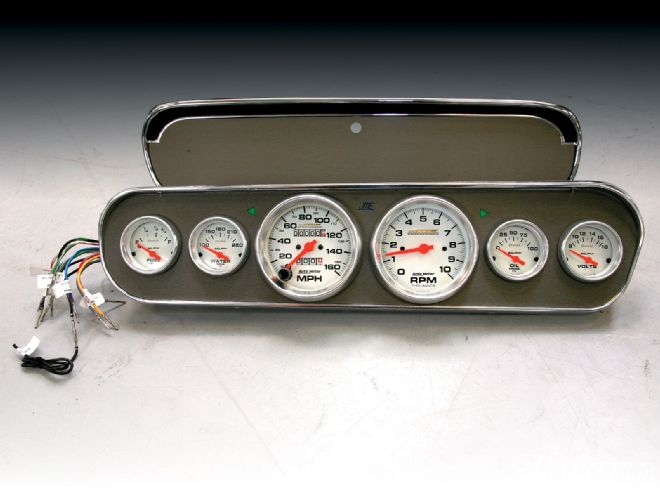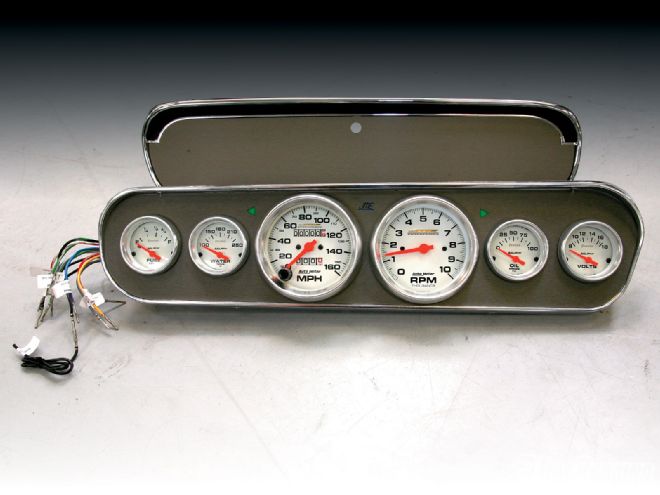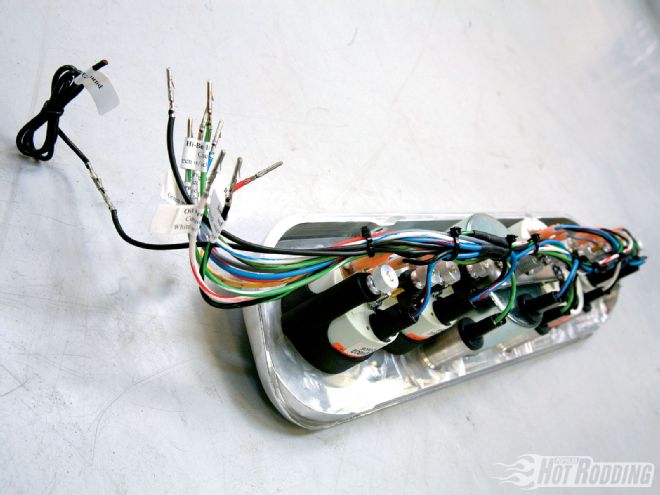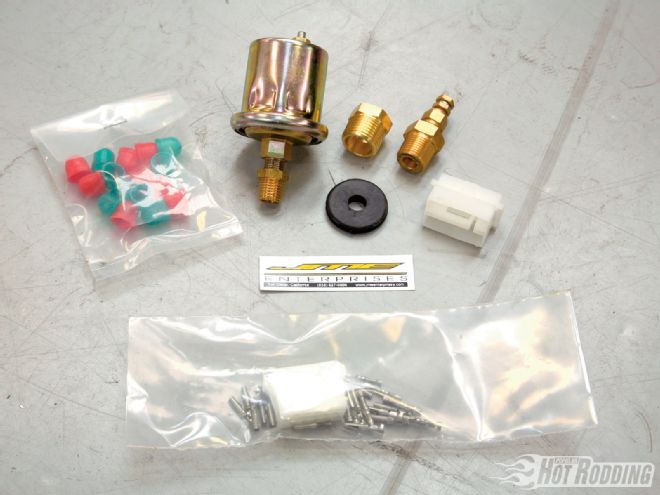
With a big-inch Windsor and road racing duties to come, keeping an eye on what's going on underhood is extremely important for the Project Street Fighter '66 Mustang. The factory gauge set has the reflexes of a brick, and gives us a vague sense of what's between high and low on the dials. A solution to keeping better track of the vitals is to replace the factory gauges with aftermarket ones that actually have numbers on them for a more accurate interpretation. We could have done that, but we would still be missing a tachometer. That's what lead us to JME Enterprises-one of the leaders in early Mustang performance. Known primarily as a builder of high-end suspensions for Mustangs, JME departed from their normal fare to create a billet replacement instrument panel for first-gen Mustangs that allows the four standard gauges to fit with a speedometer and tachometer sandwiched between. No more tach hose-clamped to the steering column or screwed to the dash! JME also has a matching billet glovebox door; since the Mustang's interior was built with a symmetrical look, it would be aesthetically wrong to leave the stock pot-metal door in place. The gauge pods come in camera-case black, brushed aluminum, wood grain, and a gray brushed aluminum, which was our choice for this Mustang.

The gauge pod is simply stunning to look at, but that alone isn't the whole story. It's fitted with JME-branded gauges built by a major gauge manufacturer; this ensures any change in the car's condition will be reliably displayed for you to see. Knowing how fast you're going is probably the least important figure on the dash at the racetrack, but that's not the case for the rest. Any serious performance engine needs to have its vitals accurately monitored to ensure that it will keep on revving the next time. Wet sump motors like ours have a tendency to lose oil pressure as the pan level shifts. This is due to the g-forces produced. If you see a dip in oil pressure while cornering, you know to slow your roll, or pull out off track to fix the problem. Having an accurate fuel level gauge will also save you from a lot of embarrassment at a track day or on the street.
 JME couldn't have made it easier to wire up this gauge pod. Each light, gauge power, and ground are grouped so that there is only one wire for each. The rest are bundled neatly and strung to one end where they await their connector.
JME couldn't have made it easier to wire up this gauge pod. Each light, gauge power, and ground are grouped so that there is only one wire for each. The rest are bundled neatly and strung to one end where they await their connector.
Installation on the JME gauge pack was as simple as it gets. JME sends the gauges mounted in the pod ready to go, and they've taken all of the guesswork out of wiring them up. A completely assembled instrument panel starts at $949.95, but you can purchase the dash bezel by itself for $485.95, and wire in your own gauges. (The matching glovebox door runs $225.95.) Each gauge lead is labeled so you don't need to chase them back to the gauges. Besides the '65-66 Mustang, JME also offers complete gauge assemblies and bezel kits for '67-68, '69-70, and '87-93 Mustangs.
 The JME gauge package includes all of the gauge senders necessary to sweep the needles correctly. Where to place them on the engine really depends on your layout. A popular place for the water temperature sender is a plug by the thermostat or the heater hose outlet if there is no heater. Oil pressure can be drawn from the port to the right of the mechanical fuel pump mount on the driver side.
The JME gauge package includes all of the gauge senders necessary to sweep the needles correctly. Where to place them on the engine really depends on your layout. A popular place for the water temperature sender is a plug by the thermostat or the heater hose outlet if there is no heater. Oil pressure can be drawn from the port to the right of the mechanical fuel pump mount on the driver side.
Since we installed American Autowire's early Mustang wiring harness last month, JME sent us the schematics with color codes to help us connect the two sets of wires. JME provided the connector and pins to mate the two harnesses. We expected to spend the evening wiring the whole thing, so we were impressed that the whole installation took no more than 30 minutes. Talk about instant gratification.